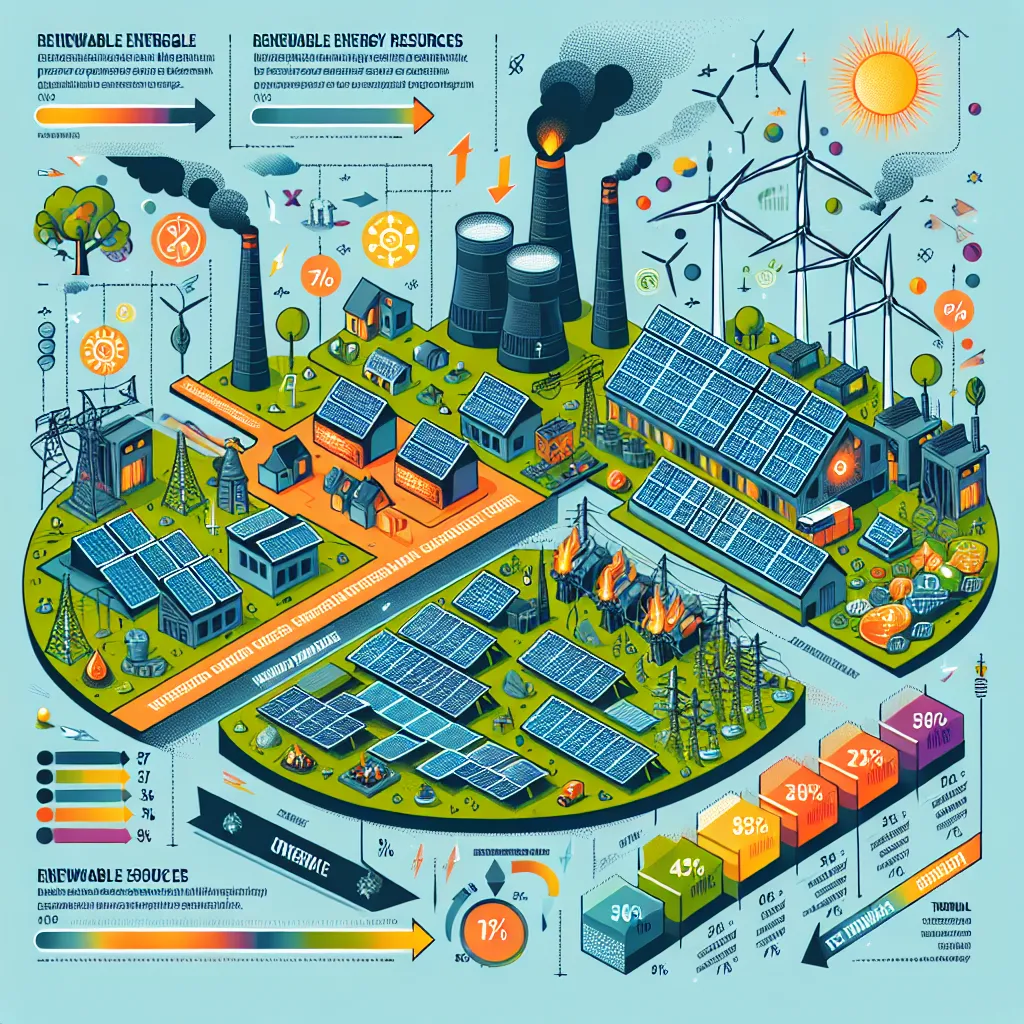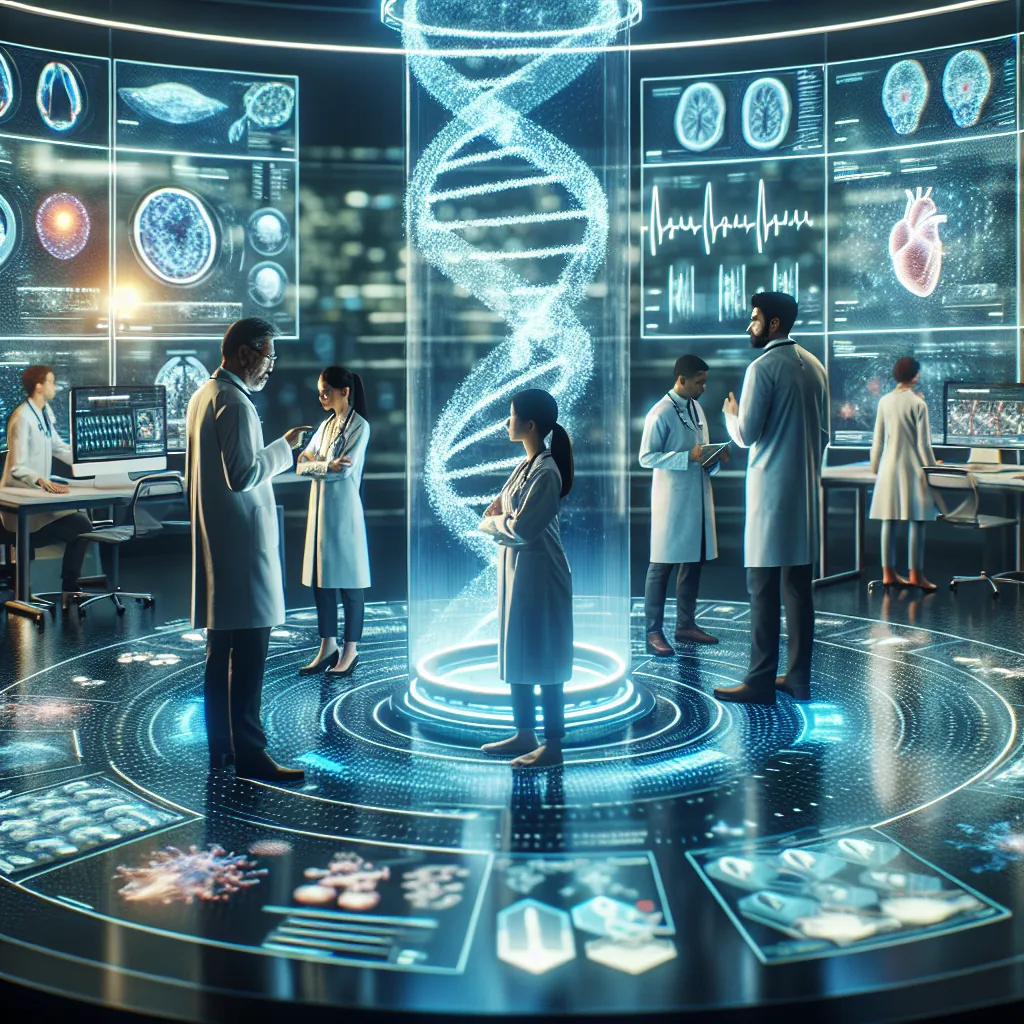Are you preparing for the IELTS Reading test and looking to enhance your skills on topics related to renewable energy and its impact on traditional power sectors? Look no further! In this comprehensive practice test, we’ll explore this crucial subject while helping you sharpen your reading comprehension abilities. Let’s dive into a full IELTS Reading test with passages of varying difficulty, followed by a range of question types and detailed answers.
Nội dung bài viết
- Introduction
- Passage 1 (Easy Text)
- The Rise of Renewable Energy
- Questions 1-5
- Questions 6-10
- Passage 2 (Medium Text)
- The Transformation of Traditional Power Sectors
- Questions 11-14
- Questions 15-20
- Passage 3 (Hard Text)
- The Systemic Implications of Renewable Energy Integration
- Questions 21-26
- Questions 27-32
- Questions 33-40
- Answer Key
- Passage 1
- Passage 2
- Passage 3
Introduction
The impact of renewable energy on traditional power sectors is a hot topic in today’s world, as we strive for more sustainable energy solutions. This IELTS Reading practice test will not only help you understand this important subject but also prepare you for the actual IELTS exam. We’ll cover three passages of increasing difficulty, each accompanied by a variety of question types typically found in the IELTS Reading test.
 Renewable Energy Impact
Renewable Energy Impact
Passage 1 (Easy Text)
The Rise of Renewable Energy
Renewable energy has become an increasingly important part of the global energy mix in recent years. Sources such as solar, wind, hydroelectric, and geothermal power are gaining ground as alternatives to traditional fossil fuels like coal, oil, and natural gas. This shift is driven by several factors, including concerns about climate change, improvements in renewable technology, and decreasing costs of implementation.
One of the most significant impacts of the rise of renewable energy has been on the traditional power sector. Conventional power plants, which have long been the backbone of electricity generation in most countries, are now facing new challenges and opportunities. As renewable energy sources become more prevalent, they are changing the way electricity is produced, distributed, and consumed.
The intermittent nature of some renewable sources, such as solar and wind power, has required power grids to become more flexible and adaptive. This has led to innovations in energy storage technologies and smart grid systems that can better manage the variable output of renewable sources. Additionally, many traditional power companies are now investing in renewable energy projects themselves, recognizing the long-term potential of these technologies.
However, the transition to renewable energy is not without its challenges. Some regions have experienced grid stability issues as they integrate larger amounts of renewable energy into their systems. There are also concerns about the economic impact on communities that have long relied on traditional power sectors for employment and tax revenue.
Despite these challenges, the momentum behind renewable energy continues to grow. Governments around the world are setting ambitious targets for renewable energy adoption, and private investment in the sector is increasing. As technology improves and costs continue to fall, it is likely that renewable energy will play an even larger role in the global energy landscape in the coming years.
Questions 1-5
Do the following statements agree with the information given in the passage?
Write:
TRUE if the statement agrees with the information
FALSE if the statement contradicts the information
NOT GIVEN if there is no information on this
- Renewable energy sources are completely replacing traditional fossil fuels.
- The cost of implementing renewable energy technologies has decreased.
- Traditional power plants are becoming obsolete due to renewable energy.
- Energy storage technologies have improved to handle variable renewable energy output.
- All governments have set targets for 100% renewable energy adoption.
Questions 6-10
Complete the sentences below.
Choose NO MORE THAN TWO WORDS from the passage for each answer.
- The __ __ of some renewable energy sources has led to the need for more flexible power grids.
- Many traditional power companies are investing in renewable energy projects due to their __ __.
- Some regions have experienced __ __ issues when integrating large amounts of renewable energy.
- Communities that rely on traditional power sectors are concerned about the __ __ of the transition to renewable energy.
- As renewable energy technology improves and costs fall, it is expected to play an even __ __ in the global energy landscape.
Passage 2 (Medium Text)
The Transformation of Traditional Power Sectors
The inexorable rise of renewable energy sources has precipitated a profound transformation in traditional power sectors worldwide. This shift is not merely a technological evolution but a fundamental reimagining of energy production, distribution, and consumption paradigms. As renewable energy technologies mature and proliferate, they are reshaping the landscape of the global energy market, challenging long-established norms and forcing traditional power sectors to adapt or risk obsolescence.
One of the most significant impacts of renewable energy on traditional power sectors has been the decentralization of energy production. Historically, electricity generation was concentrated in large, centralized power plants, typically fueled by coal, natural gas, or nuclear energy. These plants distributed power over vast distances through complex transmission networks. However, the advent of renewable technologies, particularly solar and wind, has enabled a more distributed model of energy production. This shift has empowered consumers to become prosumers – both producers and consumers of energy – through technologies like rooftop solar panels and small-scale wind turbines.
This decentralization has profound implications for traditional utility companies. Many are grappling with the need to overhaul their business models, moving away from a focus on large-scale power generation and towards providing more flexible, service-oriented offerings. Some forward-thinking utilities are embracing this change, investing in renewable energy projects and developing new services to help customers manage their energy use more efficiently.
Another critical impact has been on the operational dynamics of power grids. The intermittent nature of many renewable energy sources poses challenges for grid stability and reliability. Traditional power plants, designed to provide constant baseload power, are now required to operate more flexibly, ramping up and down to accommodate fluctuations in renewable energy output. This has led to increased wear and tear on equipment and, in some cases, reduced efficiency.
To address these challenges, there has been significant investment in grid modernization and smart grid technologies. These innovations allow for more sophisticated management of diverse energy sources, improved demand response capabilities, and better integration of energy storage solutions. Advanced forecasting techniques and real-time data analytics are becoming increasingly crucial in managing the complex interplay between renewable and traditional energy sources.
The economic landscape of the energy sector is also undergoing a seismic shift. The plummeting costs of renewable energy technologies, particularly solar and wind, have made them increasingly competitive with, and in some cases cheaper than, traditional fossil fuel-based generation. This cost dynamic is reshaping investment patterns in the energy sector, with capital increasingly flowing towards renewable projects and away from traditional power infrastructure.
However, this transition is not without its challenges. Many regions still rely heavily on traditional power sectors for employment and economic activity. The closure of coal mines and power plants can have devastating effects on local communities, necessitating careful planning and support for affected workers and regions. Additionally, the intermittency issue of renewable energy sources requires substantial investment in energy storage technologies and grid infrastructure to ensure reliable power supply.
Despite these challenges, the momentum behind renewable energy appears unstoppable. Driven by concerns over climate change, air quality, and energy security, governments worldwide are implementing policies to accelerate the adoption of renewable energy. This regulatory landscape, coupled with ongoing technological advancements and falling costs, suggests that the transformation of traditional power sectors will continue apace, reshaping the global energy landscape for decades to come.
Questions 11-14
Choose the correct letter, A, B, C, or D.
-
According to the passage, the rise of renewable energy has led to:
A) The complete replacement of traditional power plants
B) A decentralization of energy production
C) An increase in energy consumption
D) Higher costs for consumers -
The term “prosumers” in the passage refers to:
A) Professional energy consumers
B) People who only produce energy
C) Individuals who both produce and consume energy
D) Energy company executives -
What challenge does the intermittent nature of renewable energy pose?
A) Increased energy costs
B) Reduced energy efficiency
C) Grid stability issues
D) Lack of consumer interest -
How are traditional power plants adapting to the rise of renewable energy?
A) By shutting down completely
B) By increasing their fossil fuel consumption
C) By operating more flexibly
D) By reducing their power output
Questions 15-20
Complete the summary below.
Choose NO MORE THAN TWO WORDS from the passage for each answer.
The impact of renewable energy on traditional power sectors has been significant, leading to a 15) __ of energy production. This has resulted in consumers becoming 16) __, both producing and consuming energy. Traditional utility companies are having to 17) __ their business models to adapt to these changes. The intermittent nature of renewable energy has led to challenges in 18) __, requiring investment in grid modernization and smart technologies. Economically, the 19) __ of renewable energy technologies has made them increasingly competitive with traditional power sources. Despite challenges, the transition to renewable energy continues, driven by concerns over climate change, air quality, and 20) __.
Passage 3 (Hard Text)
The Systemic Implications of Renewable Energy Integration
The integration of renewable energy sources into existing power infrastructures represents a paradigm shift that extends far beyond mere technological substitution. This transition embodies a fundamental restructuring of energy systems, with far-reaching ramifications for economic models, regulatory frameworks, and societal relationships with energy consumption. The traditional power sector, long characterized by centralized generation and unidirectional energy flows, is undergoing a metamorphosis that challenges entrenched operational paradigms and necessitates a reimagining of the entire energy value chain.
At the heart of this transformation lies the concept of grid flexibility, a characteristic that has become increasingly critical as the proportion of variable renewable energy sources in the energy mix grows. Traditional power systems, designed around the principle of dispatchable generation matching predictable demand curves, are ill-equipped to handle the stochastic nature of wind and solar power. This mismatch has catalyzed innovations in energy storage technologies, demand-side management strategies, and advanced forecasting methodologies. The integration of these solutions is giving rise to a more dynamic, responsive grid capable of balancing supply and demand in real-time across multiple temporal and spatial scales.
The economic implications of this shift are profound and multifaceted. The levelized cost of electricity (LCOE) from renewable sources has plummeted in recent years, often undercutting traditional fossil fuel-based generation. This cost trajectory has precipitated a reallocation of capital within the energy sector, with investment flowing disproportionately towards renewable projects. However, this trend belies the complexities of energy economics in a transitioning system. The value deflation effect, whereby the economic value of variable renewable energy decreases as its market penetration increases, poses challenges for the long-term economic viability of both renewable and conventional generation assets.
Moreover, the shift towards renewables is reconfiguring the geopolitical landscape of energy. Countries rich in fossil fuel resources are grappling with the prospect of stranded assets and diminishing global influence, while nations at the forefront of renewable technology development are emerging as new energy powerhouses. This realignment is prompting a reevaluation of energy security paradigms and international energy governance structures.
The regulatory frameworks governing energy markets are also undergoing significant evolution. The traditional model of vertically integrated utilities operating as natural monopolies is giving way to more disaggregated market structures that facilitate competition and innovation. Regulatory sandboxes are emerging as tools for policymakers to experiment with novel market designs and incentive structures that can accommodate the unique characteristics of renewable energy sources. These experiments are yielding insights into the efficacy of various policy instruments, from carbon pricing mechanisms to capacity markets, in driving the energy transition while maintaining system reliability and affordability.
The social dimensions of this transition are equally significant. The democratization of energy production through distributed renewable technologies is empowering communities and individuals, fostering a new energy citizenship. However, this shift also raises questions of energy justice and equitable access to the benefits of clean energy technologies. The concept of a just transition has gained prominence, emphasizing the need to address the socio-economic impacts on communities historically dependent on fossil fuel industries.
Technological convergence is amplifying the transformative potential of renewable energy integration. The nexus of renewable energy systems with developments in artificial intelligence, blockchain, and the Internet of Things is opening new frontiers in grid management and peer-to-peer energy trading. These technologies promise to enhance system efficiency, resilience, and participant engagement, potentially catalyzing a shift towards more decentralized, autonomous energy ecosystems.
However, the path towards a renewable-dominated energy system is not without obstacles. The intermittency challenge remains a significant hurdle, necessitating continued investment in energy storage technologies and grid infrastructure. The materials intensity of renewable technologies also raises questions about the sustainability of supply chains and the environmental impacts of resource extraction. Additionally, the cybersecurity implications of increasingly digitalized and distributed energy systems present new vulnerabilities that must be addressed.
In conclusion, the impact of renewable energy on traditional power sectors transcends simple technological substitution. It represents a systemic transformation that is reshaping the technical, economic, regulatory, and social dimensions of energy systems globally. As this transition unfolds, it will continue to challenge existing paradigms, create new opportunities, and necessitate innovative solutions to emerging challenges. The ultimate trajectory of this transformation will be determined by the complex interplay of technological innovation, policy frameworks, market dynamics, and societal values, heralding a new era in the global energy landscape.
Questions 21-26
Complete the summary below.
Choose NO MORE THAN THREE WORDS from the passage for each answer.
The integration of renewable energy into existing power infrastructures represents a 21) __ that goes beyond simple technological change. This transition requires a reimagining of the entire 22) __. The concept of 23) __ has become crucial as the proportion of variable renewable energy sources increases. The economic implications are significant, with the 24) __ from renewable sources often being lower than traditional fossil fuel-based generation. This has led to a 25) __ within the energy sector. However, the 26) __ poses challenges for the long-term economic viability of both renewable and conventional generation assets.
Questions 27-32
Do the following statements agree with the information given in the passage?
Write:
TRUE if the statement agrees with the information
FALSE if the statement contradicts the information
NOT GIVEN if there is no information on this
- The geopolitical landscape of energy is unchanging despite the shift towards renewables.
- Regulatory sandboxes are being used to experiment with new market designs for renewable energy.
- The democratization of energy production through renewable technologies is empowering communities.
- Technological convergence is hindering the integration of renewable energy systems.
- The intermittency challenge of renewable energy has been fully resolved.
- The cybersecurity of digitalized energy systems is a growing concern.
Questions 33-40
Complete the sentences below.
Choose NO MORE THAN TWO WORDS from the passage for each answer.
- Traditional power systems struggle to handle the __ __ of wind and solar power.
- Countries rich in fossil fuels are facing the prospect of __ __ as the world shifts to renewables.
- The concept of a __ __ emphasizes the need to address socio-economic impacts on fossil fuel-dependent communities.
- The convergence of renewable energy with AI and IoT is opening new frontiers in __ __ and peer-to-peer energy trading.
- The __ __ of renewable technologies raises questions about supply chain sustainability.
- The transition to renewable energy is reshaping the technical, economic, regulatory, and __ __ of energy systems globally.
- The ultimate trajectory of the energy transformation will be determined by the interplay of technological innovation, policy frameworks, __ __, and societal values.
- The integration of renewable energy represents a __ __ that is reshaping the global energy landscape.
Answer Key
Passage 1
- FALSE
- TRUE
- FALSE
- TRUE
- NOT GIVEN
- intermittent nature
- long-term potential
- grid stability
- economic impact
- larger role
Passage 2
- B
- C
- C
- C
- decentralization
- prosumers
- overhaul
- grid stability
- plummeting costs
- energy security
Passage 3
- paradigm shift
- energy value chain
- grid flexibility
- levelized cost of electricity
- reallocation of capital
- value deflation effect
- FALSE
- TRUE
- TRUE
- FALSE
- FALSE
- TRUE
- stochastic nature
- stranded assets
- just transition
- grid management
- materials intensity
- social dimensions
- market dynamics
- systemic transformation
This IELTS Reading practice test on the impact of renewable energy on traditional power sectors covers a wide range of aspects related to this important topic. By working through these passages and questions, you’ll not only improve your understanding of this subject but also enhance your reading comprehension skills for the IELTS exam.
Remember to practice regularly with various topics and question types to fully prepare for your IELTS Reading test. Good luck with your studies!
To learn more about related topics, check out these articles:
- The Role of Governments in Promoting Renewable Energy Adoption
- How Renewable Energy is Reducing Greenhouse Gas Emissions
- [Impact of Renewable Energy on Reducing Carbon Emissions](https://www.ielts.net/impact


